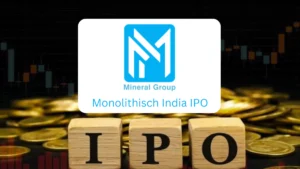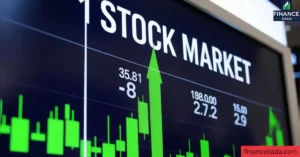Tata Motors Share Price Dips 5% Why Is the Stock Falling in 2025
The Tata Motors Share Price took a hit on June 16, 2025, dropping over 5% in early trade, driven by concerns over its luxury arm, Jaguar Land Rover (JLR). Investors were rattled by Tata Motors’ revised FY26 EBIT margin guidance for JLR, now set at 5-7%, down from an earlier target of 10%. This news, coupled with new US-imposed tariffs, has sparked a sell-off, impacting the Tata Motors Share Price significantly.
As India’s leading automaker, Tata Motors remains a key player in the passenger and commercial vehicle segments, but recent challenges have put its stock under pressure. With the Tata Motors Share Price currently trading at around Rs. 700, down 25% from its 52-week high, investors are asking: Is this a dip to buy or a sign of deeper troubles? Here’s a breakdown of what’s behind the fall and what it means for investors.

Reasons Behind the Tata Motors Share Price Drop
The Tata Motors Share Price decline is largely tied to JLR’s lowered FY26 EBIT margin guidance of 5-7%, compared to 10.7% in Q4 FY25. This downgrade reflects challenges like US tariffs on imported vehicles, which could squeeze JLR’s profitability in a key market. Posts on X highlight investor disappointment, noting JLR’s near-zero free cash flow projection for FY26 as an added concern.
Tata Motors is also facing intense competition in India’s EV market, with its share dropping to 55.4% in FY25 from 84% in FY23. Rivals like Mahindra and Hyundai are gaining ground with feature-rich EVs, putting pressure on Tata’s passenger vehicle segment. This competitive shift is weighing on the Tata Motors Share Price, as investors worry about long-term growth.
Global supply chain risks, particularly China’s dominance over lithium-ion batteries and rare earth magnets, add another layer of uncertainty. Tata Motors highlighted these concerns in its FY25 annual report, noting potential delays in EV production. These factors have fueled the Tata Motors Share Price volatility, making investors cautious.
Key Triggers for the Tata Motors Share Price Decline
| Factor | Impact |
|---|---|
| JLR EBIT Margin Downgrade | FY26 EBIT guidance cut to 5-7% from 10%, signaling lower profitability. |
| US Tariffs | Increased costs for JLR exports, impacting margins and cash flow. |
| EV Market Competition | Tata’s EV market share fell to 55.4% in FY25, down from 84% in FY23. |
| Supply Chain Risks | Dependence on China for EV batteries and magnets poses production risks. |
Brokerage Views on Tata Motors Share Price
Brokerages have mixed outlooks on the Tata Motors Share Price. JPMorgan downgraded the stock to ‘neutral’ from ‘overweight’, slashing its target price to Rs. 740 from Rs. 1,250, citing challenges in JLR and domestic segments. Kotak Institutional Equities maintained a ‘Sell’ rating with a target of Rs. 600, pointing to JLR’s competitive pressures and tariff risks.
In contrast, Nomura remains cautiously optimistic, assigning a ‘Neutral’ call with a target of Rs. 799. It highlights Tata Motors’ focus on expanding market share in commercial vehicles (CV) and passenger vehicles (PV), expecting a 5% annual growth in medium and heavy CV volumes. Investors are closely watching JLR’s guidance updates for further clarity.
Indian investors should note that while the Tata Motors Share Price has corrected significantly, some analysts see long-term potential. BNP Paribas suggests JLR’s cost improvements and Tata’s CV upcycle could drive recovery, but a breakout above Rs. 745 is needed for bullish momentum.
Tata Motors’ Strategic Plans
Tata Motors is investing heavily to counter challenges, with a planned Rs. 350 billion ($4.1 billion) investment over the next five years to boost its EV and CV businesses. The company aims for a 40% CV market share by FY27 and a 10% EBITDA margin in its PV and EV segments by FY30, focusing on decarbonization and software-defined vehicles.
Efforts to localize EV battery supply chains are underway to reduce reliance on China, addressing concerns raised in its annual report. However, extending the life of internal combustion engine (ICE) platforms may be necessary if EV adoption slows in key markets like Europe and the US, impacting the Tata Motors Share Price outlook.
For Indian investors, Tata Motors’ long-term vision is promising, but near-term hurdles like JLR’s margin pressures and EV competition pose risks. The Tata Motors Share Price could see further volatility until clarity emerges on global trade policies and market share recovery.
Risks to Consider Before Investing
The Tata Motors Share Price is sensitive to global economic factors, including US tariffs and geopolitical tensions, such as the Israel-Iran conflict, which recently dragged down Indian markets. These external pressures could continue to impact investor sentiment.
Domestic EV competition and supply chain constraints, particularly for EV batteries, remain significant risks. The Tata Motors Share Price may face further downside if JLR’s profitability doesn’t improve or if EV market share continues to erode. Investors should assess their risk appetite carefully.
Why the Tata Motors Share Price Drop Matters
- JLR Challenges: Lowered EBIT margins and zero free cash flow in FY26 signal near-term pressure.
- EV Market Share Loss: Falling from 84% to 55.4% in two years highlights competitive risks.
- US Tariffs Impact: Increased costs for JLR exports could hurt profitability.
- Supply Chain Risks: Dependence on China for EV components adds uncertainty.
- Brokerage Downgrades: Mixed analyst views reflect caution on near-term performance.
The Tata Motors Share Price dip reflects broader industry challenges, but the company’s long-term EV and CV strategies offer hope. Investors should monitor JLR’s performance and Tata’s market share recovery.
FAQs About Tata Motors Share Price
Q1: Why did the Tata Motors Share Price fall on June 16, 2025?
The Tata Motors Share Price dropped over 5% due to JLR’s revised FY26 EBIT margin guidance of 5-7%, down from 10%, and US tariff concerns.
Q2: What is the current Tata Motors Share Price?
As of June 16, 2025, the Tata Motors Share Price is around Rs. 700, down 25% from its 52-week high of Rs. 735.70.
Q3: What are brokerage targets for Tata Motors Share Price?
Nomura has a ‘Neutral’ call with a Rs. 799 target, while Kotak suggests ‘Sell’ at Rs. 600, and JPMorgan targets Rs. 740.
Q4: Is Tata Motors a good investment now?
The Tata Motors Share Price offers long-term potential, but near-term risks like JLR margins and EV competition suggest caution. Consult a financial advisor.
Q5: What are Tata Motors’ future plans?
Tata Motors plans to invest Rs. 350 billion by 2030 to boost EV and CV market share, targeting 40% in CV by FY27 and 10% EBITDA in PV/EV by FY30.
Conclusion
The Tata Motors Share Price drop on June 16, 2025, reflects investor concerns over JLR’s lowered FY26 EBIT guidance and broader challenges in the EV and CV segments. While US tariffs and competition weigh on the stock, Tata Motors’ Rs. 350 billion investment and focus on localization offer hope for recovery. Indian investors should weigh the risks against the company’s long-term potential.
With the Tata Motors Share Price at a 25% discount from its peak, it may be a buying opportunity for long-term investors, but short-term volatility is likely. Keep an eye on JLR’s updates and market trends before deciding. The Tata Motors Share Price story is one to watch in 2025!
Also Read: Monolithisch India IPO Closes Today 7.5x Subscribed, GMP Soars to 27%









